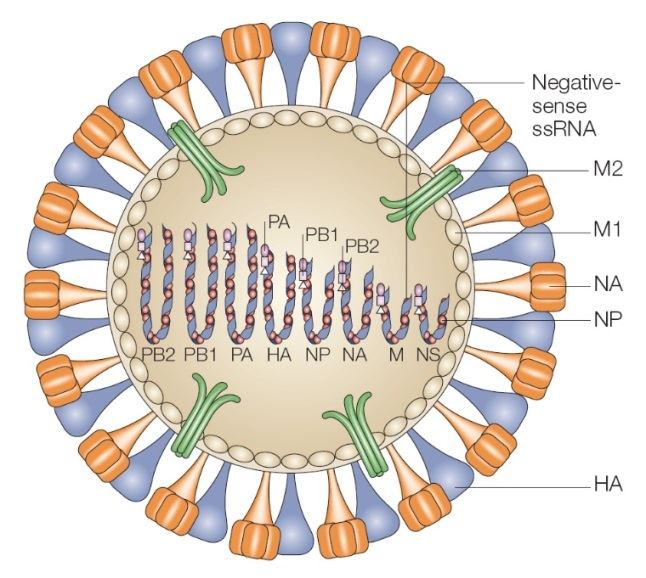IAV HA
 Influenza A viruses (IAV) belong to the Orthomyxoviridae family and can circulate widely and cross interspecies barriers through the highly antigenic drift and shift of the 18 subtypes of HA and 11 subtypes of neuraminidase (NA).
Influenza A viruses (IAV) belong to the Orthomyxoviridae family and can circulate widely and cross interspecies barriers through the highly antigenic drift and shift of the 18 subtypes of HA and 11 subtypes of neuraminidase (NA).
HA is a glycosylated protein of IAV which is involved in viral infection. The infection is accomplished through binding to sialic acid-containing glycans on the surface of the host cell. It is reported to be responsible for binding the virus to cells with sialic acid on the membranes, including the cells in the upper respiratory tract or erythrocytes. In addition, it is responsible for the fusion of the viral envelop with the endosome membrane when the pH is reduced.
HA has at least eighteen different antigens. These subtypes are named H1 through H18. H16 was discovered in 2004 on influenza A viruses isolated from black-headed gulls from Sweden and Norway. H17 was discovered in 2012 in fruit bats. HA has two functions -- by the binding to these cells' sialic acid-containing receptors, it allows the recognition of target vertebrate cells. Secondly, when HA is bound, it facilitates the entry of the viral genome into the target cells. All this is accomplished by causing the fusion of host endosomal membrane with the viral membrane.
If you can’t find your product on this list? Please directly send email to
For Research Use Only. NOT FOR CLINICAL USE.
Online Inquiry
Welcome! For price inquiries, please feel free to contact us through the form on the left side. We will get back to you as soon as possible.
